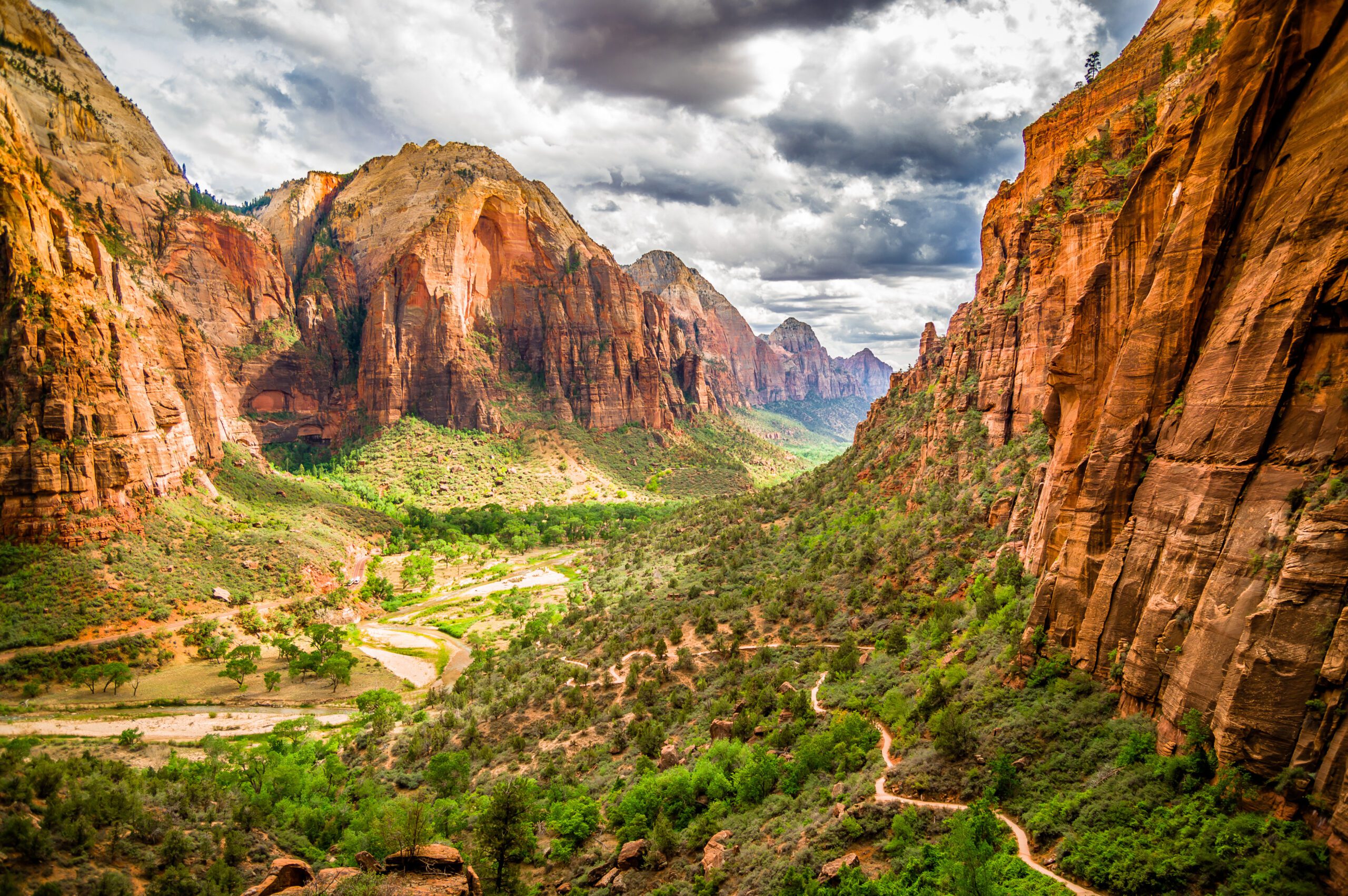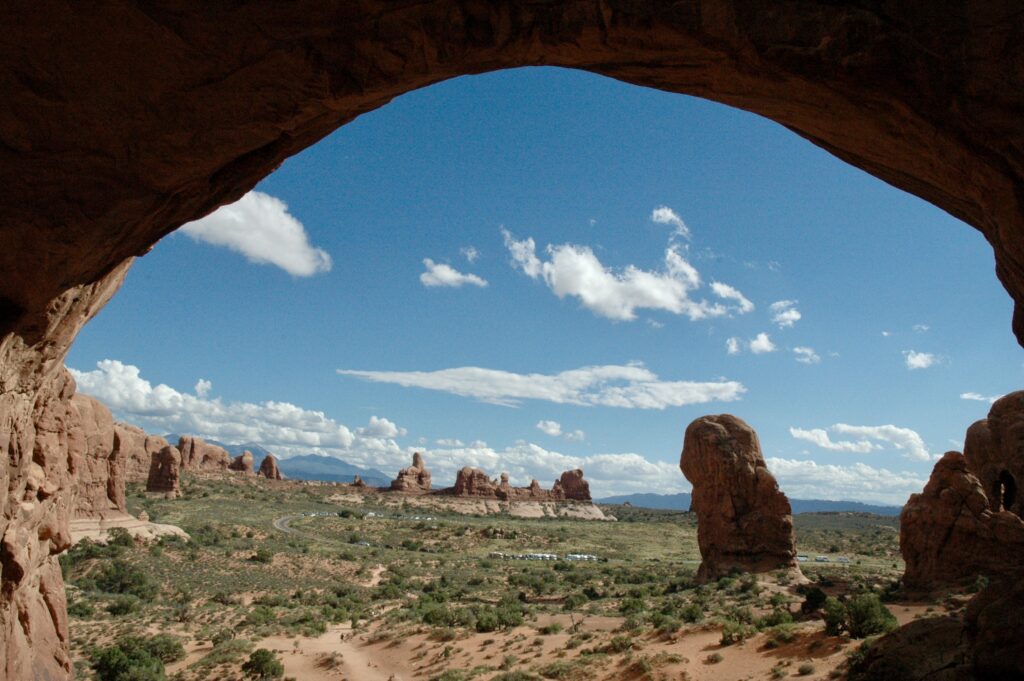This article provides an overview of things to see and do as well as places to stay in the Zion National Park and the surrounding area along with useful links to other websites for additional travel related information.
At a Glance
In 1880, the scientist Clarence Dutton declared, “Nothing can exceed the wondrous beauty of Zion. In its proportions it is about equal to Yosemite, but in the nobility and beauty of the sculptures there is no comparison. There is an eloquence in their forms which stirs the imagination with a singular power and kindles in the mind a glowing response.”
From the verdure of the expansive valley floors to the creamy sandstone of towering cliffs rising 2,000 feet (600 m) above, Zion is a wonderland of visual imagery. The monolithic stone sculptures, lush forests and roaring rivers are breathtaking, and the first-time visitor will be amazed by the diverse array of colors, a vibrant melange of magenta, azure, vermilion, and cyan. Zion National Park has become a popular destination for the tourist experiencing the American West for the first time and long-time denizens, alike.
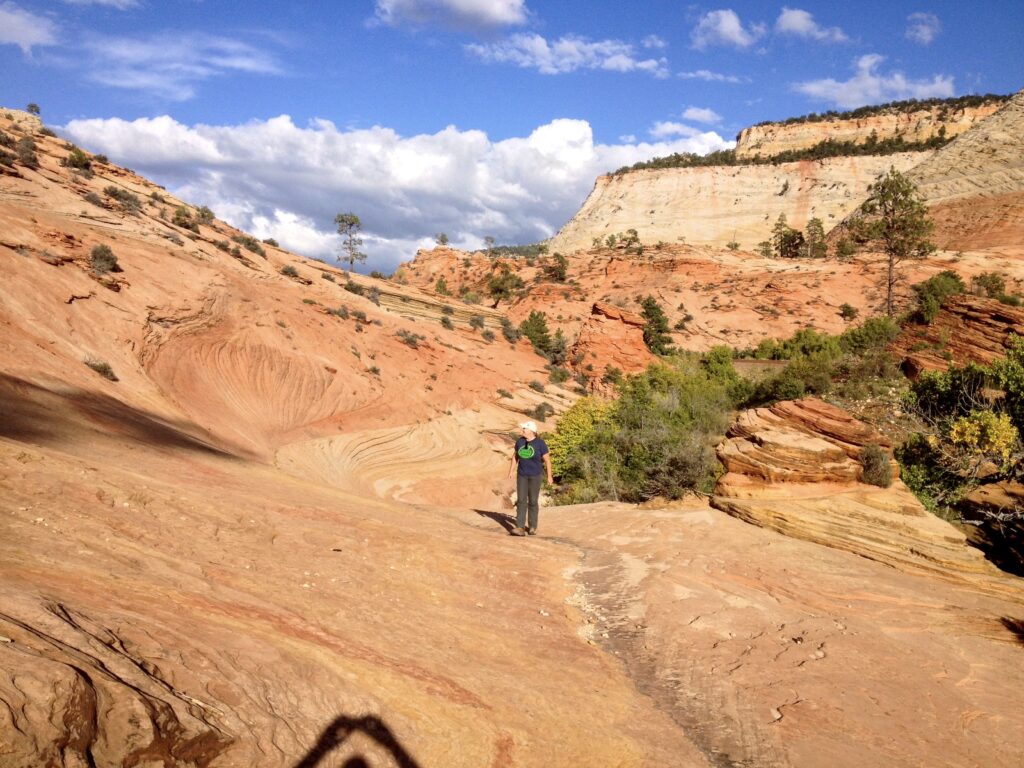
Comprising more than 147,000 acres, the park covers a wide range of elevations from 3,700 feet (1,130 meters) to 8,726 feet (2,630 meters) above sea level. The terrain runs from desert to forest, with a dramatic river canyon known as the Narrows. The weather and temperature in the area is just as diverse, reaching over 100F (38 C) in the summer, while the higher elevations are often snow-capped during the winter months.
Zion National Park has two main sections: Zion National Park and Kolob Canyons. Zion National Park is the larger, more accessible and more popular section with most tourists exploring the Zion Canyon area and perhaps taking a drive on the Zion – Mount Camel Highway and seeing the upper eastern part of the park. However, there’s a lot more to this park than these areas, but requires a bit more effort to see it. For example, you could spend a day driving up the Kolob Terrace Road to explore the more remote northwestern parts of the park or, if you happen to be driving on Interstate 15 and near exit 40 you could take a short drive up Kolob Canyons Road to Kolob Canyons Viewpoint. Both of these roads are paved, but not recommended for large vehicles as they can be narrow with tight corners in places.
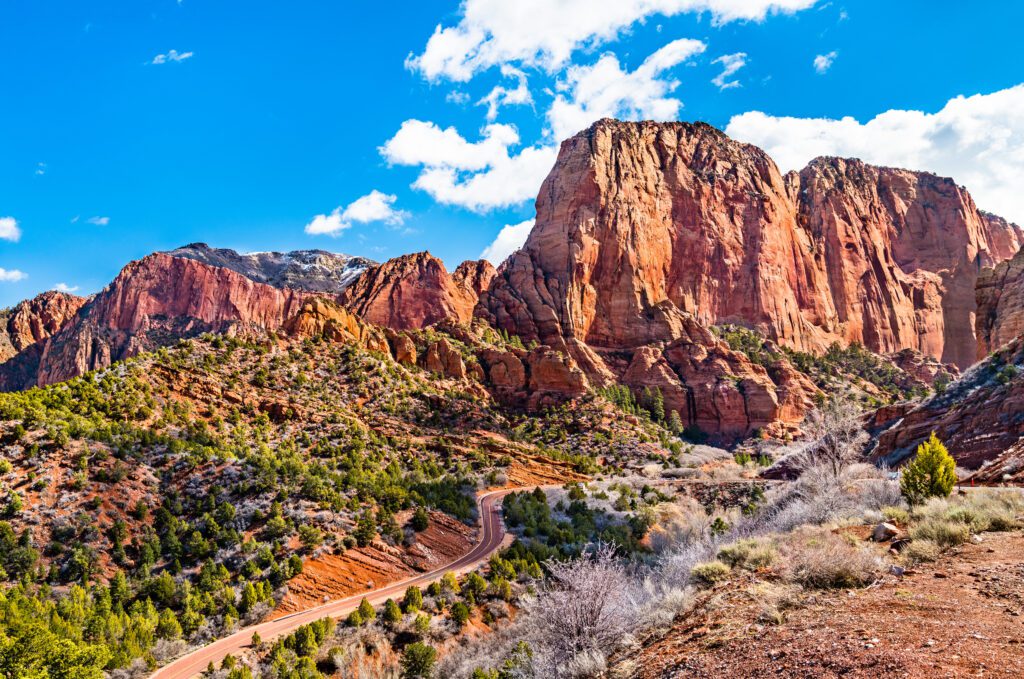
Activities
Hiking, Backpacking and Rock Climbing
While access roads provide a scenic route through much of the area, hiking is the best, and in many cases, the only way to see Zion National Park. There are a variety of trails available, from scenic strolls to challenging multi-day excursions. Popular day-hikes include the Emerald Pool Trail, which winds through a forest of maple, oak and cottonwood trees, past numerous waterfalls, to the picturesque Emerald Pools. A more strenuous day-hike is the popular Angels Landing Trail, which climbs 1,500 feet (457 m) to a summit that provides spectacular views into Zion Canyon.
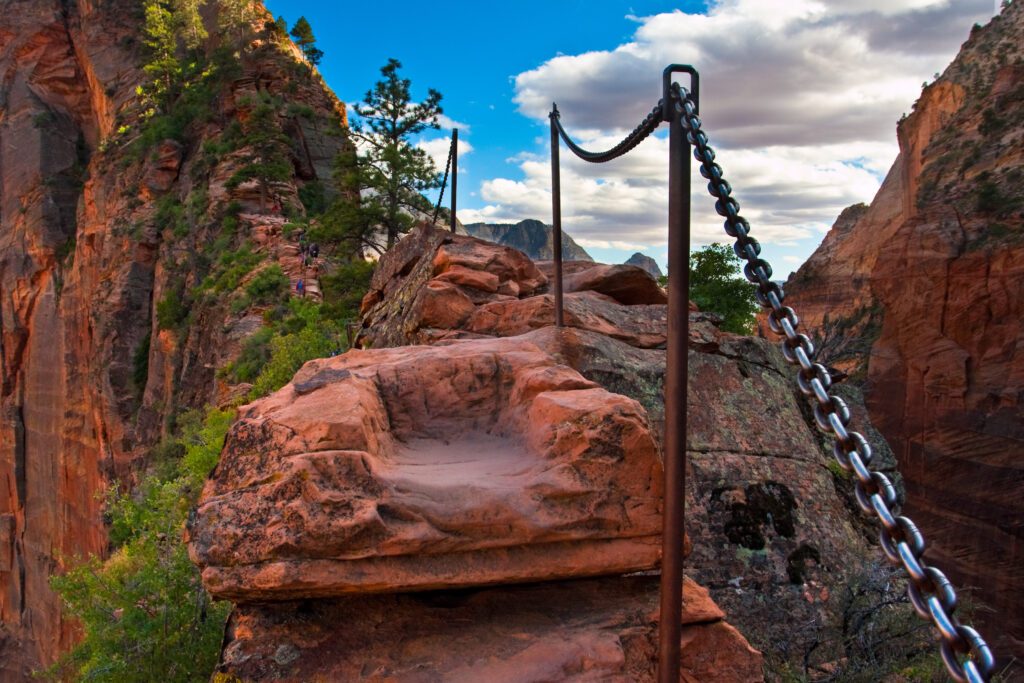
Zion Park also provides many backpacking possibilities. A permit is required for all over-night hikes and most of the terrain is rugged, but the scenery is definitely worth the effort.
Rock-Climbing is another popular pastime in the park. The tall sandstone cliffs throughout the canyon provide challenging routes and it has become a Mecca for technical climbers, though much of the rock is loose and requires the climbers to place their own protection. Because of this, rock climbing in Zion is most suited for expert climbers.
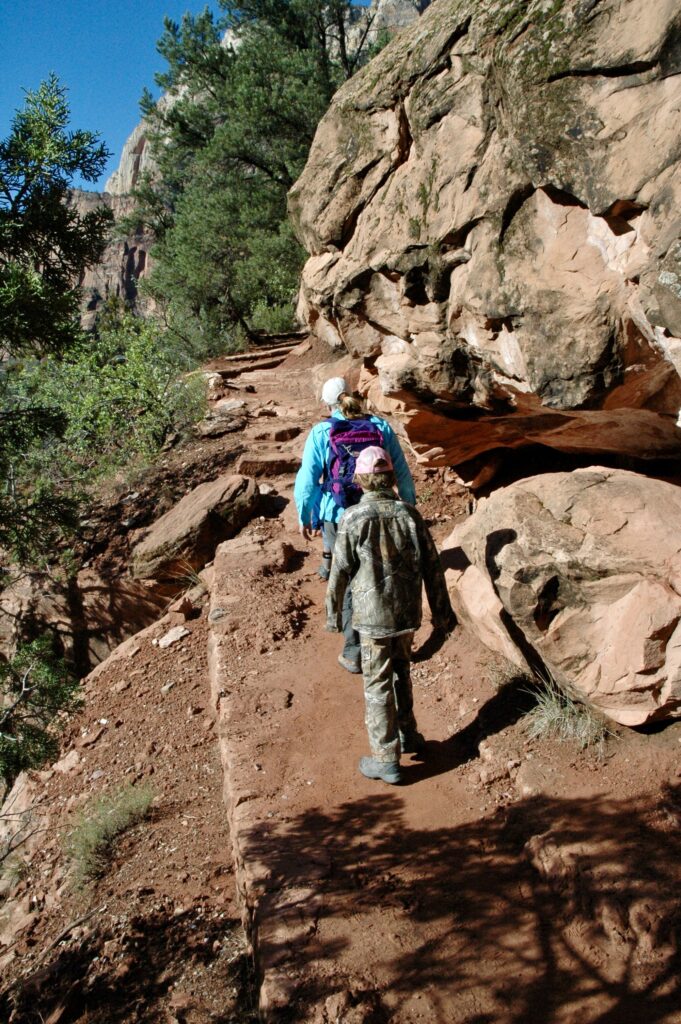
Riverside Walk and the Zion Narrows
To truly experience the magnificence of Zion National Park be sure to follow the Riverside Walk up the Virgin River. The paved trail is only about 2 miles long and there are many trailside exhibits and hanging wildflowers along the way. Following the Riverside Walk places you at the beginning of the Zion Canyon Narrows where the pavement ends. From this point, hikers can continue upstream where the canyon walls are only 24 feet (7 meters) apart and measure more than 1,000 feet (300 m) high! You will want to bring a good pair of hiking boots and be prepared to get wet. Much of the canyon is too narrow for side trails, forcing the hiker to wade into the river over slippery rocks. A permit is not required for day-hikers but you will want to check the weather forecast and speak to the park rangers before venturing into the canyon, as flash floods are common.

For the more adventurous hikers, a 16-mile (26 km) trail through the Narrows is available. The Narrows is not your average backcountry hike. Located at the North Fork of the Virgin River, the Narrows trail is situated in a 1,000 foot (305 meter) deep chasm that narrows to less than 25 feet (8 meters) in many places. This is truly an amazing hike that is highly recommended. The “trail” takes you through waterfalls, hanging gardens, and beautiful carved sandstone arches. The canyon is a cornucopia of sights, sounds, smells and colors that defy explanation.
Getting There
There are 3 major cities with international airports that most people use when traveling to this area: Salt Lake City, Utah with Salt Lake City International Airport (SLC), Las Vegas, Nevada with Harry Reid International Airport (LAS) and Phoenix, Arizona with Phoenix Sky Harbor International Airport (PHX). The Flagstaff Pulliam Airport (FLG) also has limited domestic and international flights and is a little closer than Phoenix.
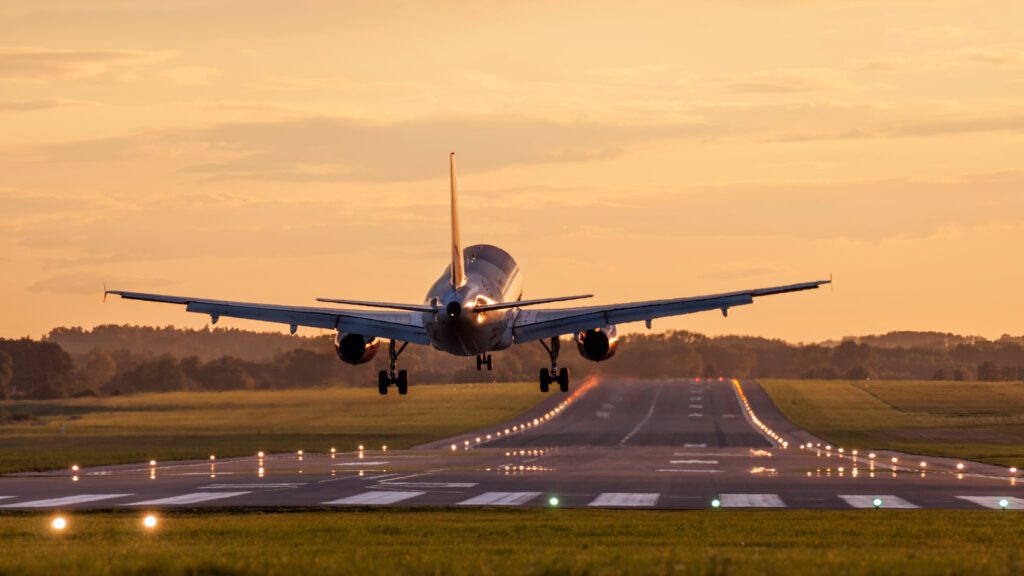
From Salt Lake City, Utah
The park is just over 4 ½ hours from Salt Lake City, Utah taking Interstate 15 south to Route 17 south then to Route 9 east. You can stop off at exit 40 for a short drive up Kolob Canyons Road to Kolob Canyons Viewpoint for a nice scenic break.
From Las Vegas, Navada
The park is just under 3 hours from Las Vegas, Nevada taking Interstate 15 northeast to Route 9 east.
From Phoenix, Arizona
The park is just over 6 ½ hours from Phoenix, Arizona taking Interstate 17 north to Route 89 north to Route 9 west. You could also choose to take the more scenic way on Route 89A through Vermilion Cliffs National Monument.
Where to Stay
In the Park
There are three campgrounds and one lodge located inside the park.
Lodges
The Zion Lodge, nestled in the Zion Valley amongst the towering rock faces, provides cabins, hotel rooms and suites and has two dining options: the Red Rock Grill and the Castle Dome Cafe.
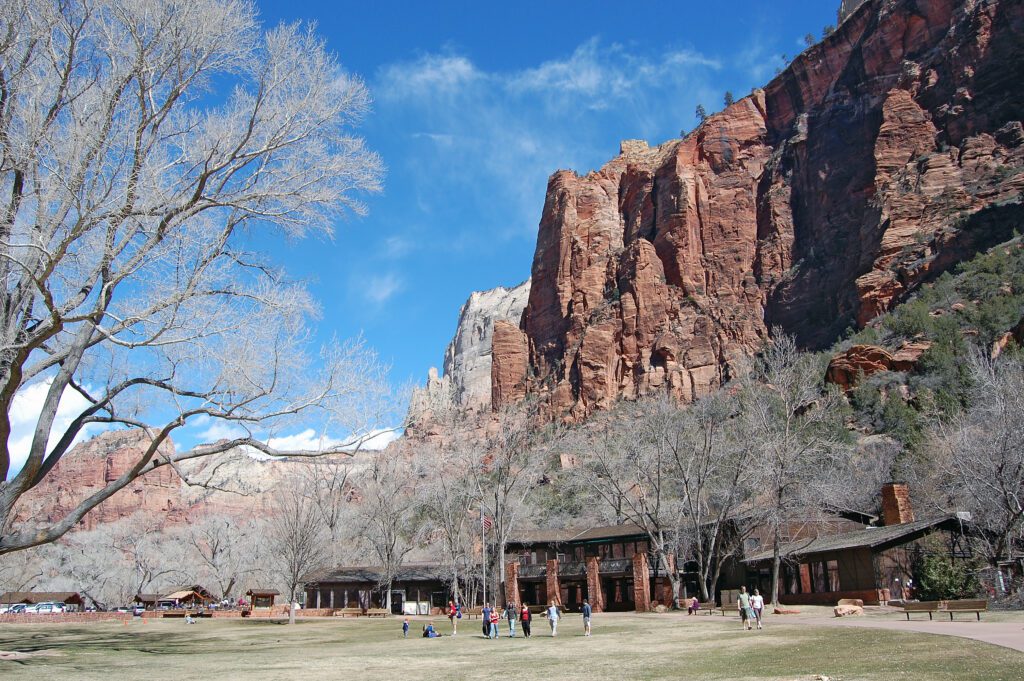
Campgrounds
The Watchmen Campground, located behind the visitor center, is the largest and most popular for RVers as it has the most sites as well as electric hookups. There is also potable water available and flush toilets. This is a popular campground and reservations are strongly suggested.
The South Campground, located across the Virgin River from the visitor center, offers additional camping sites if the Watchmen Campground is full.
The Lava Point Campground, located 25 miles north of Virgin off Kolob Terrace Road, consists of 6 primitive sites with no amenities. This campground is not recommended for RVs as the Kolob Terrace Road is not suitable for large vehicles because of its steep and narrow sections.
Nearby
Southwest Entrance
Route 9 runs through the southern section of the park and most accommodations are located along the section of Route 9 from the southwestern entrance of the park through the towns of Springdale, Rockville, Grafton, Virgin, Toquerville and Hurricane. Here you can find accommodations from budget friendly to expensive as well as a number of privately run campgrounds. From Hurricane to the park’s visitor center is about a 35 minute drive. The closer the accommodations are to the park the more expensive they will be.
Eastern Entrance
On the eastern side of the park, the small town of Mount Carmel Junction offers a limited number of accommodations including some moderately priced motels and some more expensive guest ranches. It also offers a few service stations and convenience stores.
Additional Resources
Recreation.gov – Zion National Park has additional information about this park including maps, pictures, rules, fees and facility information. You can also book certain accommodations and pay certain fees here.
VisitUtah.com – Zion National Park has a good visitors guide with information about tours, things do see and do, accommodations, getting there and many other bits of useful information.
Related USATourist Articles

